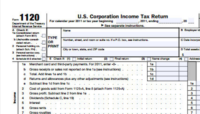For example, the company developed the means and methods to construct a two-story mechanical chiller plant. The facility required extensive coordination to integrate chillers, pumps, piping and electrical distribution into a limited space. Additionally, the company had to avoid a high-voltage electrical distribution tower adjacent to the site when lifting large pieces of mechanical equipment. Within these constraints, the company assessed various construction sequencing alternatives to determine the most effective method to fulfill its contract in building the facility.
By capturing these and all other viable activities, the tax team was able to identify $155,000 in federal R&D tax credits for the company.
Exponential Increases in Benefits
While construction companies can benefit from R&D tax credits for their efforts on more traditional jobs, maximum tax savings are often realized with services under design-build delivery. As a labor-based incentive, increased benefits are often attained on construction jobs under design-build because early involvement with designers and subsequent increases in overall project efficiencies tend to increase qualified R&D time for constructors. The increase in resultant credits is often dramatic.
For example, a construction company with $250 million in annual revenues experienced significant increases of tax savings over a four-year period by offering and conducting more integrated projects such as design-build for its government, institutional and commercial work. For 2007 and 2008, the company realized annual tax credits of approximately $75,000, mostly resulting from planning and development activities of plan-spec and hard-bid jobs.
However, with the recession in full swing by the start of 2009, the company responded to current demands by increasing its capabilities to implement design-build. As a result, its project managers and estimators focused a greater percentage of their time on upfront work to improve construction efficiency—and while overall expenses remained constant—R&D expenses increased by 50%, and the resultant credits nearly doubled to $150,000 per year because of a calculation option aimed at incentivizing immediate increases in efforts to be better, faster and cheaper.
This company realized significant value, with nearly $400,000 of R&D tax credits after a thorough study by construction specialists, engineers and attorneys.
Whether or not a construction company has a significant amount of design-build work, it is of utmost importance that R&D tax credits are thoughtfully considered as part of its business portfolio. Rules permit the reclaiming of these cash benefits for prior years within a three-year window, and therefore, the time is now to consider all available opportunities. Like any tax position, close consultation with tax advisers is a must, but additional help from specialty tax service providers is also critical.
Justin DiLauro, an engineer and licensed attorney, is an associate director of alliantgroup LP and oversees the firm’s architecture, engineering and construction industry specialization program.
Gabe Mosca, a construction industry specialist at alliantgroup LP, has a bachelor’s degree in civil engineering and several years of experience in construction management.


Post a comment to this article
Report Abusive Comment